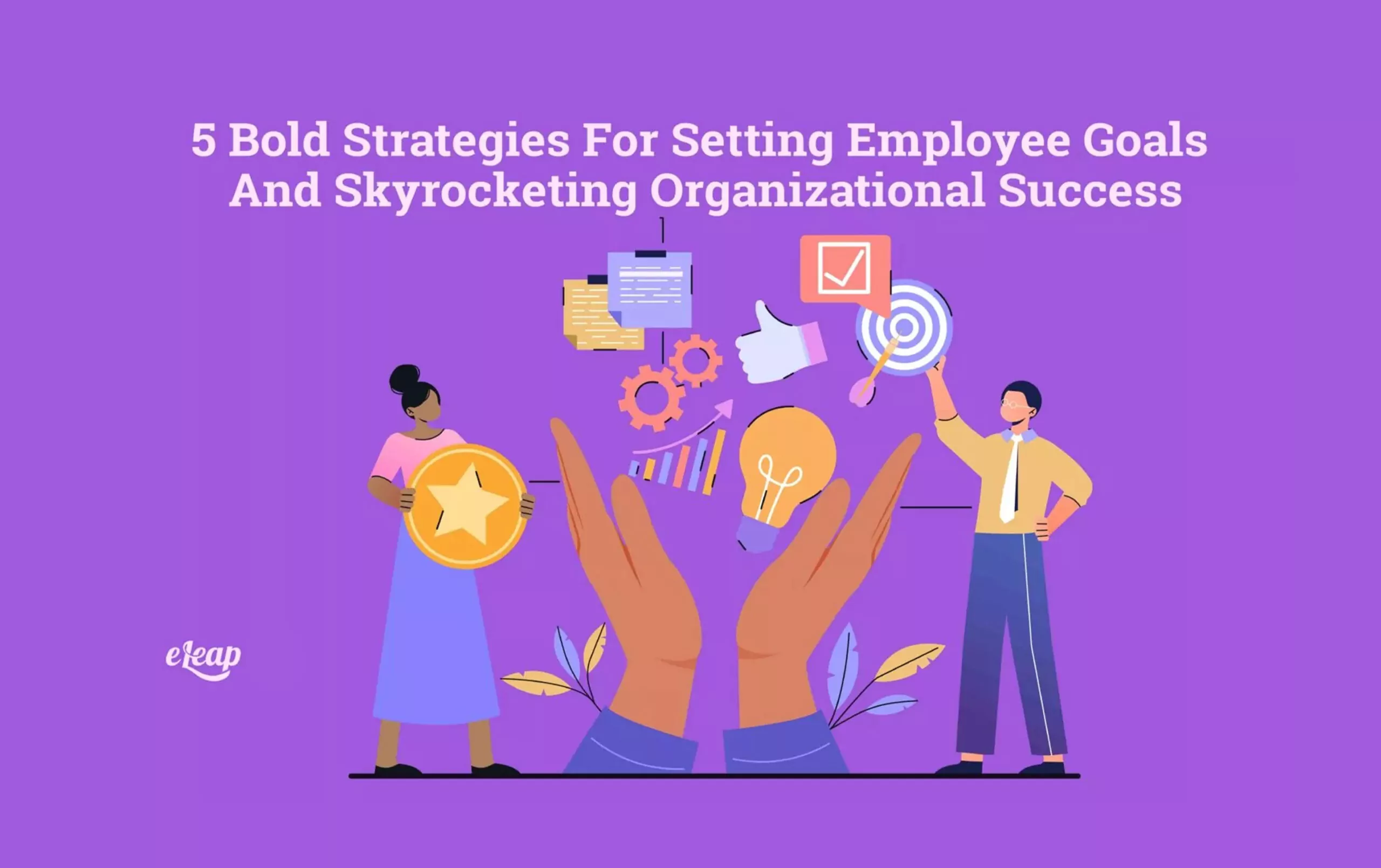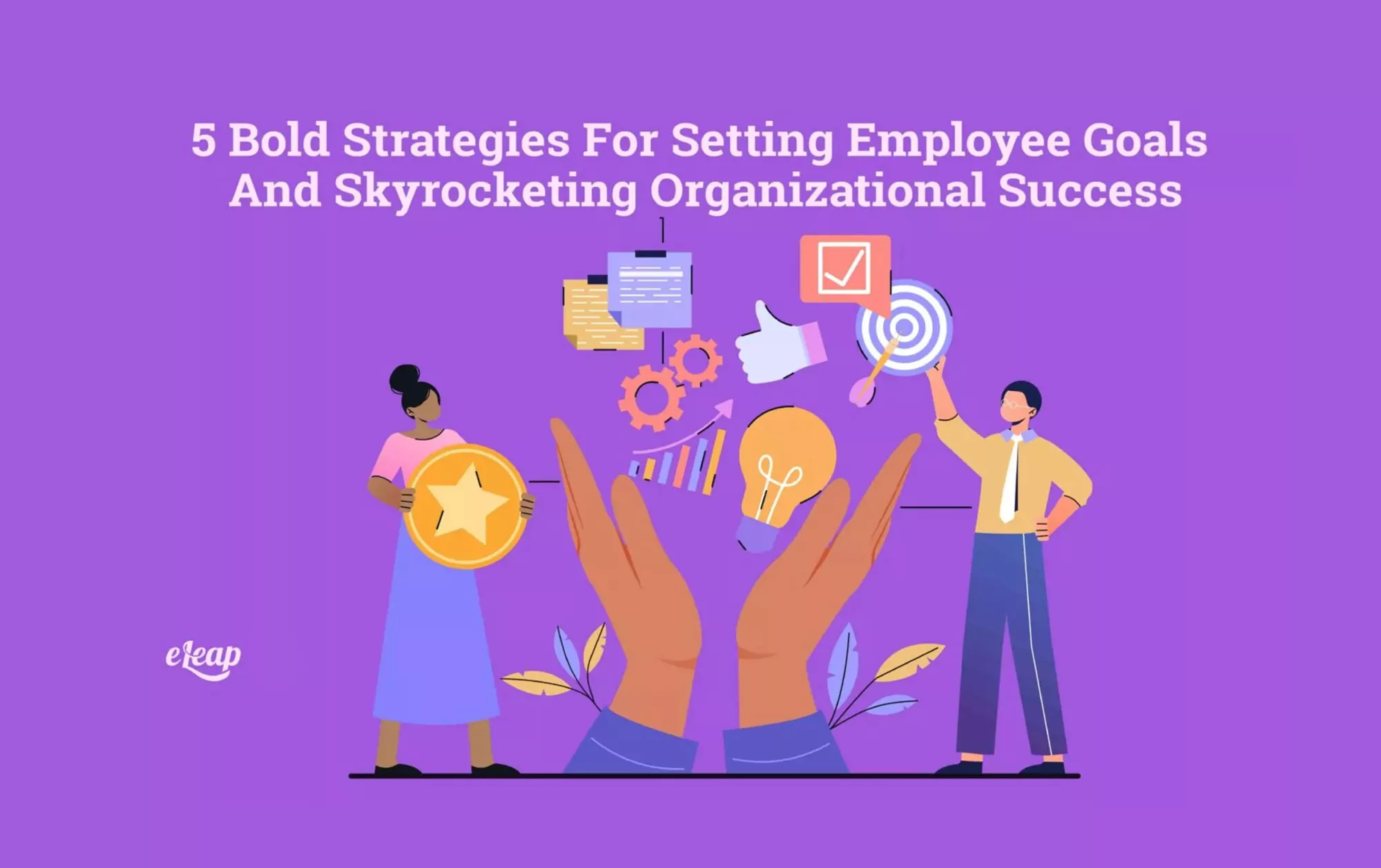5 Bold Strategies For Setting Employee Goals And Skyrocketing Organizational Success

Setting employee goals is an integral part of organizational growth and development. It helps employees stay focused and motivated, increasing productivity and success for the organization. Here are five strategies to set employees’ goals and your organization up for success. Explore how eLeaP®’s Performance Management Platform can simplify evaluations, boost productivity, and drive measurable results.
It’s not unusual to overhear employees discussing their lack of understanding of what is expected of them in the organization. Most are usually comfortable living their daily lives and passively carrying out tasks just as they come due to undefined goals and targets. This often results in low employee performance and affects the organization’s outputs.
1. Utilize A Goal Pyramid
A goal pyramid is a form of tiered goals structure that you can look at in two ways. You can view it from the top, focusing on the “why.” You can also view it from the bottom-up, focusing on the “how.” This goal-setting strategy helps tie your overarching goal to digestible, absorbable, and smaller steps, like the organization’s mission. It assists everyone on the team in connecting their contributions to the organization’s ultimate success.
A goal pyramid features these significant layers:
- Mission: What’s your organization’s long-term and overall objective? What do you intend to achieve with the team’s combined efforts? What global goal is your organization contributing to daily?
- Project: What projects do you need to work on to edge your team closer to your organization’s mission? What resources and skills does your team need to acquire to attain medium milestones?
- Tasks: How can you break the projects down? Who will head each task?
- Subtask: What daily activities should your team carry out to keep them on their feet to achieve your organization’s monthly, quarterly, and annual goals?
2. Align Organizational And Employee Goals
Aligning employee and organizational goals has more benefits than it appears. It aids transparency and gives employees the feeling of connection to their work. It creates a company culture of open and honest communication between employees and management. When an organization’s standard approach to goal-setting aligns with organizational and individual goals, it helps guide all the set goals in the appropriate direction.
3. Partner With Employees To Prepare Goals
Rather than dictating goals to employees, you should partner with them to create the goals. Employees’ contribution to setting goals helps boost their confidence and productivity and allows them to personalize the goal and perceive it as achievable.
4. Set Strength-based Goals
Although goals are established to boost employees’ skills, setting strength-based goals adjusts the focus to what employees can perform well in. This includes assigning tasks based on individual strength and allowing employees to utilize their natural abilities and foundational strengths to achieve the goals. In addition, the focus on strengths helps employees and managers recognize professional developmental goals to aim at as they continue to advance in strength.
5. Clearly State Rewards
Goals themselves aren’t enough to cause actual change. Therefore, to get the best from your employees, you can adopt a concept known as the “reward mechanism.” When employees working in an organization know that there’s a reward awaiting those who meet the set goals, there will undoubtedly be healthy competition to achieve the goals. The rewards help keep the employees charged up to perform effectively at work.

Why is it Necessary to Set Employee Goals
Regardless of your company size, budget, or industry, if you are hungry for growth, it’s non-negotiable that you set defined employee goals. It’s the fundamental reason why you should set employee goals. Other reasons why it’s necessary to set employee goals are :
- To boost your employee’s personal experience.
- To boost the morale of your employees.
- It helps improve employees’ confidence, knowing their outputs are relevant and contribute to the organization’s growth.
- To measure your organization’s KPIs and progress.
- It aids in aligning the team’s focus with your organization’s overall values.
Some Employee Goals Every Organization Should Set
As a manager, if you have been pondering what employee goals to set up in your organization to skyrocket your organizational success, the following tips should help you. They are:
Target Employee Advancement
When your employees realize that the organization isn’t selfishly using them as tools to achieve its success, they’ll do more in helping to achieve the organization’s goals. Adversely, if they realize the organization isn’t bothered about their advancement but only that of the organization, it deadens their drive to contribute towards achieving organizational success. You should target employee advancement while mapping out goals for your employees.
Improve On Your Organization’s Employee Retention
Employees in an organization usually watch out to see how much the management cares for them and have their best interests at heart while making crucial decisions. They don’t want to be identified as a dispensable tool that a manager can easily replace in an organization. They want to feel a sense of ownership over the tasks they carry out in the organization. This helps them to join hands with the management to achieve organizational success.
Create An Environment That’s Safe And Secure For Employees
A workplace should be a safe sanctuary for employees, both physically and mentally. Employees shouldn’t feel pressured; they should feel free to seek help, report situations that don’t sit well with them, and generally be allowed to speak their minds. This will increase employee retention rate and loyalty to the organization.
Final Thoughts
There’s nothing you have to lose; instead, there’s everything you stand to gain when you set defined employee goals. Setting employee goals and ensuring their implementations helps you fast-track the rate at which you’ll achieve organizational success. When correctly set, goals prevent confusion and help employees better understand how to contribute to the organization’s success.
However, tracking employee progress can be overwhelming without having the right tools. This is why you need a platform like eLeaP to simplify the goal-setting process and track progress toward those goals. With eLeaP’s Performance Management Platform, you can also identify areas for improvement to skyrocket your organizational success.